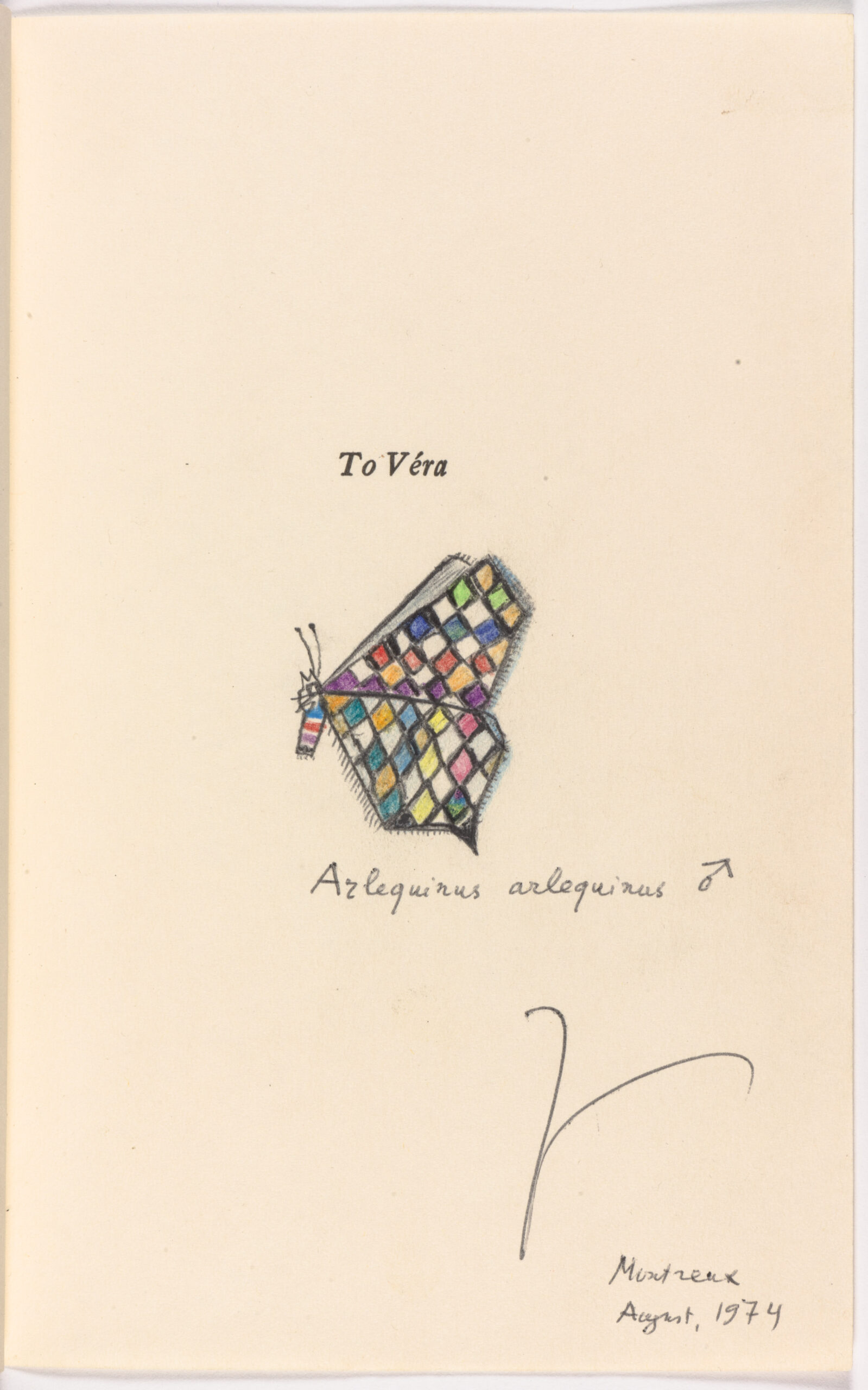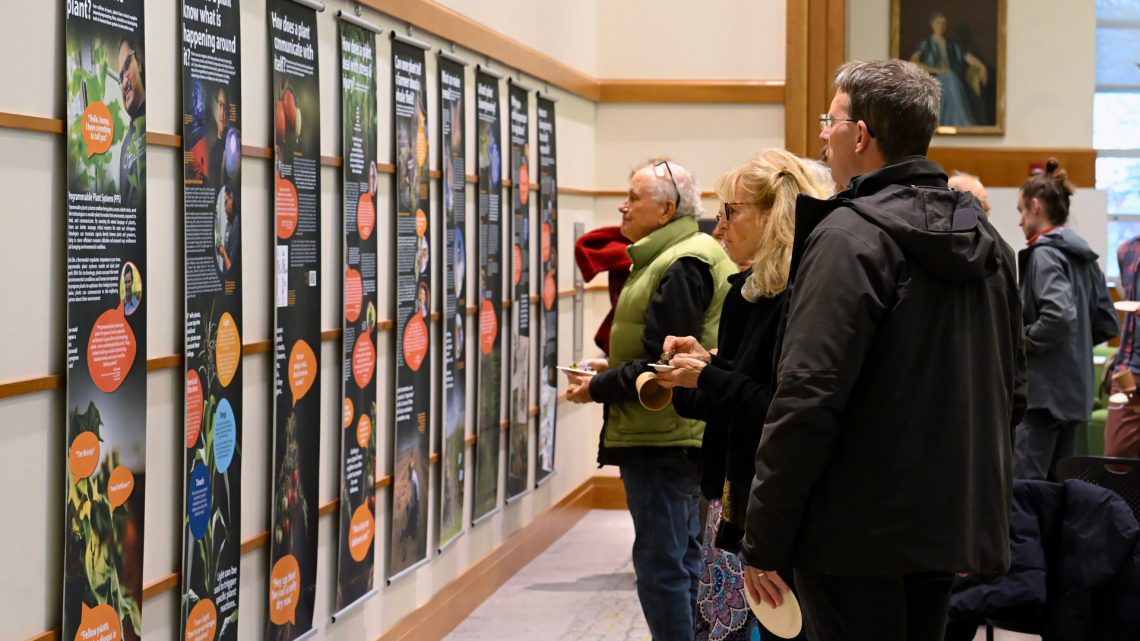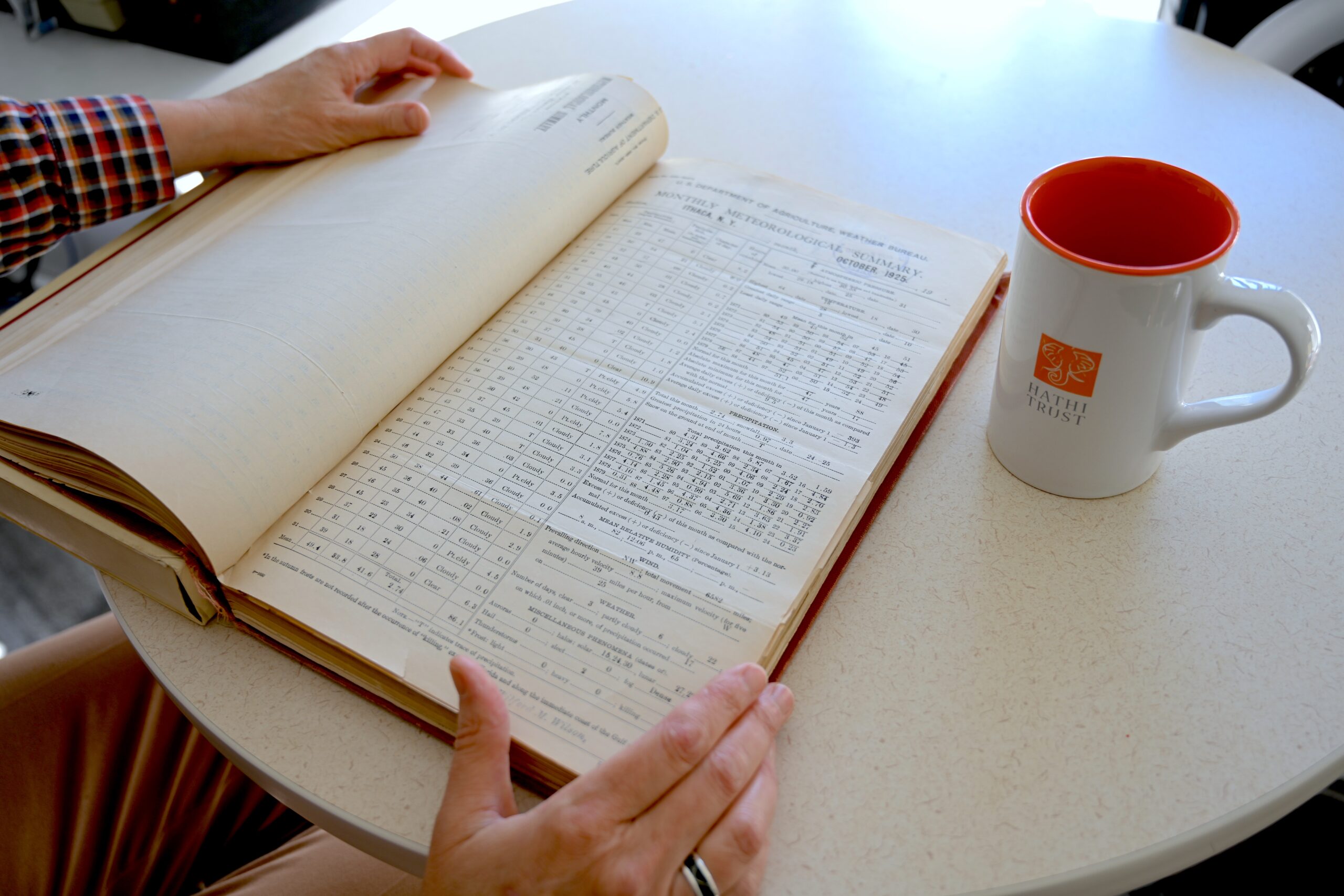
A giant of 20th century literature known for such novels as Lolita and Pale Fire, Russian émigré and former Cornell professor Vladimir Nabokov was also a prodigious lepidopterist who collected and studied butterflies since the age of five.
“It is not improbable that had there been no revolution in Russia, I would have devoted myself entirely to lepidopterology and never written any novels at all,” he said in an interview for the Paris Review in 1967.
On March 14 and 15, a series of free public events at Mann Library will celebrate Nabokov’s lesser-known but impactful contributions to the science of collecting, classifying and understanding the prismatic world of butterflies.
March 14: Talk and Exhibit Opening Reception
When Nabokov published his papers in the 1940s about the evolution and migration of a group of butterfly species known as Polyommatus blues, he was met with skepticism by the scientific community. But, more than six decades later, his theories were confirmed by a study done by a group of butterfly experts using DNA sequencing techniques.
On March 14, 4-5 p.m., in room 160 of Mann Library, the leader of that study, Naomi Pierce, will deliver a lecture titled “The Evolution of Nabokov’s Polyommatus Blues.” A biology professor at Harvard University and the lepidoptera curator in its Museum of Comparative Zoology – a position Nabokov held in the 1940s – Pierce will discuss her research in connection with the writer’s trailblazing work.

Through a collaboration between Cornell University Library and the Cornell University Insect Collection, Pierce’s lecture is part of the opening festivities for the exhibit “From Nabokov’s Net” in Mann Library’s main gallery. The exhibit will run through August, concurrent with a related book exhibit in the lobby titled “No Mere Curios: Finding Nabokov’s Lepidopterist Inspiration in the Rare Books of Entomology.”
“From Nabokov’s Net” showcases facsimiles of the writer’s original drawings, letters, photographs and other artifacts pertaining to butterflies that are kept in Cornell University Library’s Rare and Manuscript Collections. The exhibit also features specimens from the Cornell University Insect Collection, including several collected by Nabokov, who taught Russian literature at Cornell from 1948 to 1959.
The Karner blue butterfly – a novel species first described by the writer in 1943 – is featured prominently in the exhibit as a reminder of the importance of conserving natural habitats.
“When Nabokov went out and looked at these butterflies in an area outside of Albany, they were like blue snowflakes – just lots and lots of these beautiful, little blue butterflies all over,” said Jenny Leijonhufvud, Mann Library exhibit curator and outreach space coordinator, who co-curated the exhibit. “But then very quickly, in the decades after that, primarily due to habitat loss, they suddenly went from being very plentiful to being an endangered species.”

Several of Nabokov’s butterfly specimens are displayed in their original envelopes. “From his own handwritten notes on these little envelopes that contain all these butterflies, we know that these are the butterflies he was collecting while he was writing Lolita,” said Corrie Moreau, co-curator of the exhibit, director of the Cornell University Insect Collection, and professor of entomology and ecology and evolutionary biology in the College of Agriculture and Life Sciences.
“From Nabokov’s Net” uncovers an important facet of Nabokov, according to Moreau. “He could be quite whimsical in his fictional writings and even when he was writing about his own life, but he was strict and meticulous when it came to his science,” she said.

Moreau and Leijonhufvud both said they hope the exhibit will serve as a vehicle for showcasing the insect collection and the library as invaluable sources of knowledge for scholars and enthusiasts.
“Many people think museum collections are these dusty, outdated resources, but that couldn’t be further from the truth,” Moreau said, “We’re constantly using them to answer questions that the people who collected them a hundred years ago couldn’t have imagined.”
March 15: Panel Discussion, Video Screening, and Interactive Art-Making
Honoring Nabokov as a writer and scientist, the College of Arts and Sciences (A&S) is also organizing a series of events on March 15, 1-4 p.m., in Mann Library’s CALS Zone and atrium titled “Nabokov, Naturally,” part of A&S’s Arts Unplugged series and named after and inspired by a fall 2023 class taught by Anindita Banerjee, associate professor of comparative literature. In that class, students in the environment and sustainability major explored the writer’s life and work, and studied how human affairs and natural environments are entangled in Nabokov’s imagination.
“What is both unique and deeply inspiring about Nabokov’s legacy at Cornell are the intertwined ways in which his writings, drawings and photographs speak to scientists, readers and artists alike, bringing startlingly diverse fields and knowledges together as one community,” Banerjee said. “This was true for my students, in particular, who came to study Nabokov from a multitude of disciplines but with a shared passion for our planet with all its forms of life.”
During the event, participants can:
- Take a close look at Nabokov’s butterfly collection;
- Watch an eCornell video exploring the many ways that Nabokov’s legacy is alive today, both on campus and throughout the country;
- Visit the new Mann Library exhibits;
- Visit with students in the class to discover new information they discovered about Nabokov, the professor;
- Talk with faculty, students and Nabokov experts from across the country during a panel discussion titled “The Butterfly Effect: Vladimir Nabokov as Scientist and Artist;” 2-3:30 p.m., in room 102 of Mann Library;
- Stretch their creative wings by contributing to a giant multimedia art piece, or create their own butterfly with the help of entomologist/artist Annika Salzberg using both traditional and nontraditional materials.
“This 21st century engagement with Nabokov’s science-art practice transformed the legendary writer and ‘butterfly man,’ from a historical icon of Cornell to a model for living and learning today and for the future, one that that can care deeply for the world despite personal and communal tragedy and find beauty even amid unthinkable catastrophes,” Banerjee said.
This story also appeared in the Cornell Chronicle.





